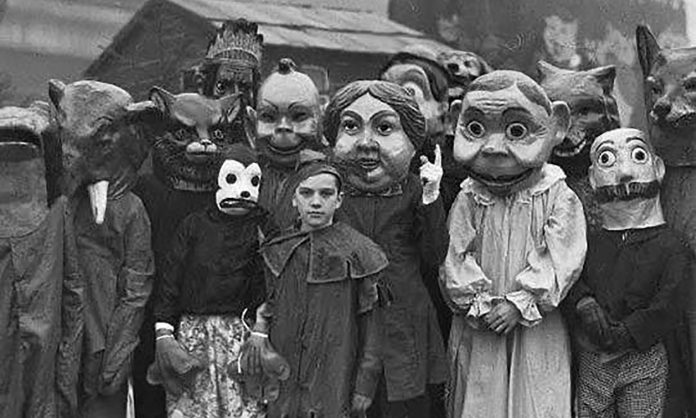Even though we’re familiar with the tropes – fog, gaslights, Inverness cloaks – Halloween was different in Victorian London.
In America, Puritans frowned on religious celebrations like All Hallow’s Eve, deeming them too Catholic, and replaced the fall observance with harvest festivals, but the influx of Irish and Scottish immigrants brought Halloween back to life. In the UK, you might think the celebrations reflected the sexual repression of the era or were an all-out rebellious Bacchanalia, but it turns out Queen Victoria like a good shindig. For a few years, she presided over a lavish and riotous Halloween party at Balmoral Castle, which took days to prepare.
The party’s central attraction was a huge bonfire, where guests burned an effigy of a witch, who was dragged to the pyre by servants dressed as goblins and fairies. Music played and guests danced around the fire. Guests might also play parlor games, like trying to use divination to find a spouse. Bobbing for apples was popular, as were games predicting death. Trick or treaters – though not yet known by that name – were probably given nuts, roasted during some of the Halloween games, or fruit, such as glazed apples. Some more elaborate parties would host entire holiday-themed meals.
While masks and costumes were not always part of the Halloween tradition, by the end of the Victorian era, they were firmly ensconced, even if the costumes weren’t of the type we’d recognize today. Costumes were homemade and generally focused on a party’s theme, rather than stock horror types or popular real-life figures. In all, Halloween parties became a social occasion and invitations to the best parties were well sought after.












